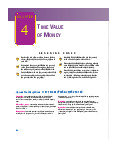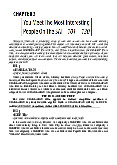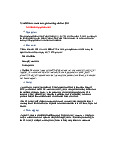



Preview text:
(Welcome to our presentation. My name is Nhi - I’m a member of group 6
- There are 6 people in my group: Phương Thanh, Kim Vy, Minh Đức and the last one is me
- Today we will talk about the Wolverine Shoes So let move to the part one) I. About Wolverine Shoes
Wolverine, founded in 1883, is a publicly traded American footwear manufacturer based
in Rockford, Michigan. The shoemaker is known for its eponymous brand, Wolverine
Boots and Shoes, as well as other brands, such as Hush Puppies and Merrell. Wolverine
World Wide, Inc. The company markets well-known brands such as Hush Puppies,
Merrell, and Wolverine. Wolverine's main competitive advantages are well-recognized
brand names, wide range of distribution channels, and diversified manufacturing and sourcing. (The next part is) II. Summary of the case
Wolverine World Wide Incorporation is best described as a designer, producer, and
marketer of footwear for leading brands. They make the majority of their sales outside of
the United States, and they conduct continuous product design research and development based on each foreign market.
The Footwear Industry
The majority of companies have contracts with foreign manufacturers to produce the
item at a lower cost, such as in China. However, a labor shortage puts upward wage pressure.
Wolverine Global Sourcing
Wolverine used to make their own footwear in the United States. They outsource more
than 90% of production to independent suppliers, with the rest being done in company-
owned facilities. China uses a fixed exchange rate regime to keep its exports cheap
around the world. They must have positive relationships with suppliers due to their over- reliance on global sourcing.
Supply Chain Management
Manufacturing is complicated, and suppliers must have strong planning, design,
transportation, and logistics capabilities. From the headquarters, they manage the global
supply chains, and all players are automatically linked for management purposes. Recent Events
Wolverine’s management launched a corporate restructuring plan to reduce and
standardize operations and supply chain functions, where they outsourced operations and
put pressure on suppliers to reduce manufacturing costs. When the supply chain was
centralized to headquarters, brand managers and suppliers were concerned about losing
control of design and production.
(And to answer the first question)
III. Question 1. What are the benefits of global sourcing to footwear/textile companies? -
Wolverine shoes as well as others from most brand are made in China, which is a
country with relatively low production and labor costs, so businesses can save money, costs for production. -
By linking up with suppliers in China or other countries, Wolverine as well as
others won't waste time looking for other suppliers to buy raw materials. -
China is now the largest country in Asia, when they link this country, their
consumption becomes easier and can be exported to countries in Asia. -
China's strength as an export platform keeps companies' production costs down. In
addition, when linked with China, consumption becomes easier and can be exported to other countries.
(To continue the presentation, please invite Kim Vy).
IV. Question 2. What are the risks and challenges of global sourcing? And recommendations? -
Shortage of labor force: Wolverine and other companies that use global
outsourcing face risks and threats such as a shortage of qualified workers and
production capacity. Because global demand for their product is growing, they will
need to expand their workforce, and they may have difficulty finding qualified
employees. If the company runs into this problem, the management will be forced
to hire even less qualified workers, which will eventually lead to other problems. -
Unsustainable Suppliers: When using global outsourcing, the majority of the
Company's products are currently sourced from third-party manufacturers in other
countries, primarily China. The Company does not have long-term contracts with
its third-party suppliers, as is common in the industry. There can be no guarantee
that the Company will not have problems with such suppliers, such as a reduction
in production capacity, failure to meet production deadlines, or an increase in manufacturing costs. -
The exchange rate differences: Another risk that the company is currently facing
is the strengthening of the foreign currency value, which has an impact on import
costs. For instance, if the Chinese currency (yuan) strengthens, the cost of
products imported from China will rise. In China, the company will have to pay
more for labor. To cover the costs, Wolverine and others will have to raise the
price of their products, which will affect price-sensitive customers. -
Quality expectations: If the company relies solely on overseas suppliers to ensure
that quality standards are met, any problems with product quality will not be
discovered until orders arrive. -
Production scheduling: When an order is late, the company may be forced to pay
a penalty to the customer or ship by air rather than ocean. The delay in product
arrival also leads to revenue stagnation and a reduction in customer experience. -
Logistics: Shipping a large amount of goods from abroad, along with ensuring the
lowest possible shipping costs, the product quality and fast shipping times, is also
a big challenge for companies using global outsourcing. Recommendations: -
The first step Wolverine should take to reduce risk and threats is to conduct
detailed planning and sensitivity analyses on key factors that may affect global
sourcing in order to generate what-if scenarios. It is critical for the company to
have a backup plan in place so that it can continue to operate in the event that something goes wrong. -
Because global sourcing can elicit opposition from employees and other
stakeholders, the company should consider their views when making decisions.
Reaching a manager-labor consensus and soliciting employee assistance in
selecting foreign partners can help the global outsourcing process run more
smoothly, thereby improving company performance. -
To avoid product quality failure, conduct quality inspections before the packaging
leaves the country of origin. Another option is to train suppliers on how to meet
your quality standards, such as by teaching them the quality-control methodology
you want them to use and holding them accountable for adhering to it. -
To avoid product stagnation, the company can pay for overtime and work with a
backup supplier to alleviate bottlenecks. -
Contingency planning ensures that alternate plans are in place in the event of a
potential risk event, such as alternative local suppliers or alternate travel routes to
avoid potential disaster areas or accidents. -
To avoid monetary risks, the company should carefully research suppliers’
countries, such as monitoring exchange rates, monetary trends and policies.
Besides, the company can select appropriate currency for contracts or use of a
small number of suppliers; higher volumes and regular orders will lower per unit
prices and lower implementation costs.



